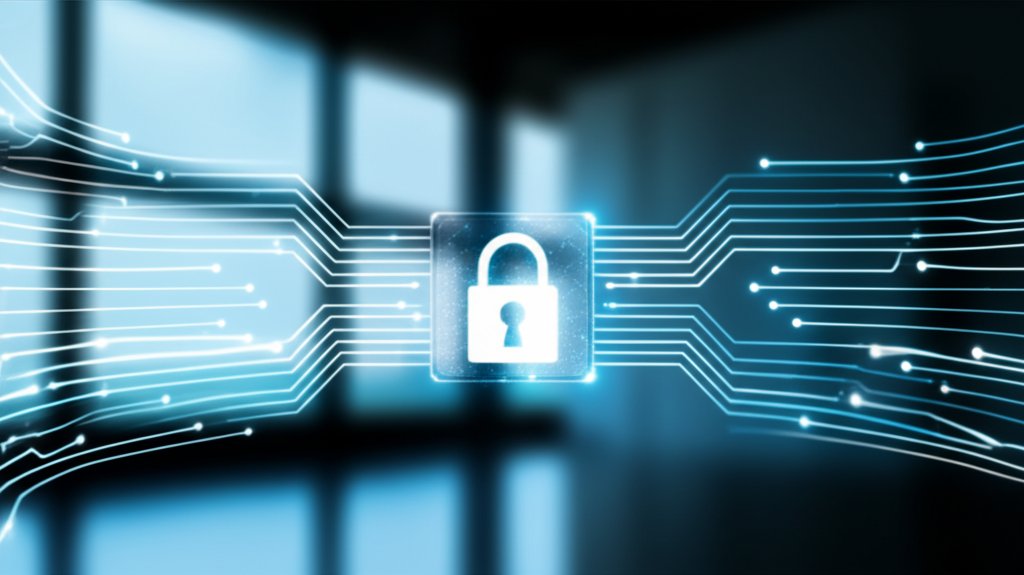Solving the Passwordless Paradox: Easy Security for Everyday Users & Small Businesses
You know the drill. That moment of dread when a website asks for your password, and your mind goes blank. Or perhaps it’s the frustration of creating yet another complex string of characters you know you’ll immediately forget. For small business owners, this isn’t just a personal annoyance; it’s a productivity drain, a hidden IT cost, and a constant security headache for your team and your operations.
As a security professional, I’m here to tell you: you’re not alone, and it’s not your fault. We’ve been stuck in a digital dilemma, trying to make our online lives secure without making them impossible to live. This tension between robust protection and a user experience that doesn’t feel like a constant battle is the heart of the “passwordless paradox,” and it’s high time we solved it.
Imagine a future where logging in is simple, intuitive, and, most importantly, far more secure than anything a traditional password can offer. This isn’t science fiction; it’s the reality of passwordless authentication. Let’s dive into how this isn’t just a buzzword, but a practical, empowering solution for individuals and small businesses alike, allowing you to take back control of your digital security and efficiency.
The Password Problem: Why Traditional Logins Are Failing Us
For decades, passwords have been our digital gatekeepers. We understand their importance, but let’s be honest, they’re also a colossal headache. It’s not just about remembering them; it’s about the fundamental flaws in their design and our inherent human behavior that make them unreliable in today’s threat landscape.
The "Password Paradox" Explained
Here’s the core issue: security experts consistently advise us to use long, complex, unique passwords for every single account. Meanwhile, our brains struggle to recall more than a handful of truly random strings. This creates a direct conflict: the more secure a password is, the harder it is for us to create and remember. This tension between strong security and user-friendly logins forces us to make compromises, often without even realizing the significant risks involved. For small businesses, this paradox manifests as employees taking insecure shortcuts, directly exposing critical business data and systems to unnecessary risk.
Common Password Pitfalls
- Weak and Reused Passwords: We do it because managing dozens of unique, complex passwords feels impossible. But reusing passwords across sites or choosing easily guessable ones (like "password123") is akin to leaving every door to your home or office unlocked with the same, easily discoverable key. When one site is breached, cybercriminals use those stolen credentials to try logging into your other personal and, crucially, business accounts – a tactic known as credential stuffing. For a small business, this can quickly lead to email compromise, financial fraud, or data theft.
- Password Fatigue: The sheer number of accounts we manage leads to exhaustion. We’re tired of creating them, remembering them, and constantly resetting them. This fatigue pushes both individuals and employees towards insecure shortcuts, undermining your security posture.
- Vulnerability to Sophisticated Attacks: Traditional passwords are ripe targets for various cyber threats. Phishing attacks trick us into revealing them. Brute-force attacks use automated programs to guess them at lightning speed. And credential stuffing, as mentioned, exploits credentials stolen from data breaches to access other services. These attacks are becoming increasingly sophisticated, making passwords an outdated and fragile defense.
- The Cost of Password Resets: For small businesses, password-related issues aren’t just annoying; they’re a significant operational cost. Employees spend valuable time dealing with forgotten passwords instead of focusing on their core tasks. For businesses without dedicated IT staff, the owner or a key employee often shoulders the burden of constant password reset requests, leading to lost productivity and unnecessary stress.
What is Passwordless Authentication? Your Key to Simpler, Safer Access
So, if passwords are demonstrably failing us, what’s the solution? The answer lies in passwordless authentication. Imagine logging into your accounts without ever typing a single password. Sounds like science fiction, doesn’t it? But it’s not, and it’s rapidly becoming our secure reality.
A Shift from "{What You Know" to "What You Have" or "Who You Are"
At its core, passwordless authentication moves away from relying on something you know (your password, which can be forgotten, guessed, or stolen) to something you have (like your smartphone or a physical security key) or something you are (your unique fingerprint or face). This fundamental shift makes it much harder for attackers to gain access, because they can’t just guess or steal a secret phrase. Your identity is tied to your physical presence or a device you control, creating a far more robust defense.
How Passwordless Authentication Works (in Simple Terms)
Instead of a password, you might use a unique, cryptographically secure key stored on your device. When you try to log in, your device proves your identity using this key. The website or service verifies this proof, and you’re in – often with just a tap, a glance, or a physical touch. There’s no password to intercept, no password to forget, and no password to reuse. It’s a seamless, secure handshake between your trusted device and the service you’re trying to access, making your digital interactions both safer and simpler.
Common Types of Passwordless Methods
You might already be using some of these without realizing they fall under the passwordless umbrella:
- Biometrics: This is "who you are." Think fingerprint scanners (like Touch ID) or facial recognition (like Face ID) on your smartphone, or even Windows Hello on your PC. These methods convert your unique biological traits into a digital key that securely unlocks your device or apps. The key advantage? Your biometric data never leaves your device; only a cryptographic “proof” is sent, making it incredibly private and resistant to remote attacks.
- Magic Links: This method relies on "what you have" (access to your email). You enter your email address on a login page, and the service sends you a unique, one-time login link to that email. Clicking it instantly logs you in. It’s simple and convenient, but its security heavily depends on the strength of your email account’s own protection.
- One-Time Passcodes (OTPs): Also "what you have." These are temporary, typically 6-digit codes sent via SMS to your registered phone or generated by authenticator apps (like Google Authenticator or Authy). You enter the code, and you’re granted access. While an improvement over passwords alone, SMS OTPs can be vulnerable to SIM-swapping attacks. Authenticator apps offer stronger protection.
- Passkeys: This is the future, here today, representing the pinnacle of passwordless security. Passkeys are secure, device-bound credentials that completely replace traditional passwords. They leverage FIDO (Fast Identity Online) standards and WebAuthn technology. When you create a passkey, your device generates a unique cryptographic key pair: a public key stored by the service, and a private key that stays securely on your device. To log in, your device uses biometric verification (like your fingerprint or face) or a PIN to confirm it’s you, then uses the private key to authenticate. Passkeys are incredibly secure, phishing-resistant, often syncable across your devices (via cloud keychains like iCloud Keychain or Google Password Manager), and offer a truly seamless experience.
- Hardware Security Keys: Another robust "what you have" method. These are small physical devices, like a YubiKey, that you plug into your computer’s USB port or tap against your phone’s NFC reader. They act as a second factor in authentication or can even serve as a primary passwordless login, providing an extremely high level of security by requiring physical presence.
The Benefits: Why Passwordless is a Win-Win for Security and Convenience
The move to passwordless authentication isn’t just about fixing a broken system; it’s about fundamentally upgrading your entire digital experience. It offers tangible, empowering advantages for everyone, from individual users to small business owners safeguarding their operations.
Enhanced Security
- Reduces Phishing and Brute-Force Attack Risks: Since there’s no password to type, phishing sites simply can’t trick you into revealing one. Passwordless methods are inherently designed to resist these common attack vectors, making it far harder for malicious actors to gain unauthorized access to your accounts.
- Eliminates Weak/Reused Password Vulnerabilities: With passwordless systems, the biggest weaknesses in our digital defenses – human error in choosing or reusing passwords – simply disappears. No more worrying whether "Summer2024!" is secure enough or if your old password from a breached site is still in use elsewhere.
- Protects Against Credential Theft and Data Breaches: Even if a service you use suffers a data breach, your passwordless credentials are much harder, if not impossible, to steal and reuse. Your unique, device-bound key isn’t sitting in a database waiting to be compromised, drastically limiting the impact of such events.
Improved User Experience
- Faster, Frictionless Logins: Imagine a world where logging in takes a second, with just a tap, a glance, or a simple PIN. That’s the reality of passwordless. It’s incredibly convenient and saves valuable time for individuals and employees, enhancing overall productivity.
- No More Forgotten Passwords or Frustrating Resets: The days of hitting "Forgot Password" are numbered. This not only makes your personal digital life easier but also significantly reduces the friction that can lead to users abandoning services or, for businesses, losing valuable work time.
- Greater Productivity for Individuals and Teams: For employees, less time spent on login issues means more time focused on their actual work. For customers accessing your online services, it means a smoother, more pleasant journey, leading to higher engagement and satisfaction.
Operational Advantages for Small Businesses
- Reduced IT Support Costs: Fewer password resets directly mean less strain on your support staff or, more typically in a small business, the owner or a key employee who handles these issues. This translates directly to tangible cost savings and allows your team to focus on core business activities.
- Streamlined Access Management: Implementing passwordless solutions can simplify how you provision and de-provision employee access to critical business applications. This makes your internal processes more efficient, reduces the risk of former employees retaining access, and enhances overall security posture.
- Enhanced Security Posture: By removing the weakest link (passwords), small businesses can significantly improve their overall cybersecurity. This protects sensitive data, intellectual property, and customer information, which is crucial for maintaining trust and avoiding costly breaches.
Addressing the "Paradox": Balancing Challenges and Solutions
While the benefits of passwordless authentication are clear and compelling, adopting new technologies always comes with considerations. The goal is to acknowledge these challenges upfront and provide practical, empowering strategies to overcome them, ensuring a smooth and successful transition for everyone.
Common Challenges in Adopting Passwordless
- Initial Implementation Complexity and Cost: For small businesses, integrating new authentication systems can initially seem daunting and potentially expensive. It requires careful planning, research into suitable solutions, and potentially new software or services.
- Device Dependency and Accessibility Concerns: What if you lose your phone, which holds your passkeys? What if an employee doesn’t have a smartphone or a device capable of biometrics? These are valid concerns that necessitate robust contingency plans and backup access methods.
- User Education and Overcoming Skepticism: People are deeply ingrained with the concept of passwords. Shifting their mindset and educating them on new methods requires clear, consistent communication and demonstrating the direct benefits. There might be privacy concerns around biometrics, for instance, that need to be addressed transparently.
- Lack of Universal Standardization and Fragmentation: While passkeys and FIDO standards are making tremendous strides toward interoperability, the ecosystem is still evolving. Managing different passwordless methods across various services can sometimes feel a bit fragmented for users right now, though this is rapidly improving.
Strategies for a Smooth Transition
- Phased Implementation: You don’t have to switch everything overnight. For businesses, start with non-critical applications or a small, tech-savvy group of employees to test the waters and gather feedback. For individuals, try it with one or two services you use regularly before expanding.
- Hybrid Approaches: Passwordless can coexist effectively with existing systems. You might use passwordless as a primary login for some services while enhancing others with strong Multi-Factor Authentication (MFA) or Single Sign-On (SSO) solutions. This allows for a gradual, manageable transition.
- User Training and Support: This is absolutely critical for success. Provide clear, easy-to-understand guides and offer ready support. Crucially, explain the "why" behind the change – better security, less frustration, improved productivity – to build buy-in and enthusiastic adoption.
- Choosing the Right Solution: Research is key. For businesses, look for Identity and Access Management (IAM) solutions that are intuitive, compatible with your existing systems, and backed by strong vendor support. Consider your specific needs, technical comfort level, and budget when making decisions.
Practical Steps for Everyday Users and Small Businesses
Ready to ditch the password headaches and embrace a more secure, simpler future? Here’s how you can start exploring and implementing passwordless solutions today.
For Individuals
- Start with Services You Already Use: Many major players like Google, Apple, and Microsoft already offer excellent passwordless options. Enable Face ID/Touch ID for your Apple ID, use Google Prompt for your Gmail, or Windows Hello for your Microsoft account. These are seamless entry points.
- Utilize Biometric Logins on Your Devices: Make sure you’re using your phone’s fingerprint or facial recognition features to unlock your device and any compatible apps. This is a foundational step for many passwordless experiences, as your device becomes your primary authentication factor.
- Explore Passkeys as They Become More Widespread: Keep an eye out for services offering passkey support. As more websites and apps adopt them, you’ll be able to create a passkey for seamless, phishing-resistant logins. Your device will often prompt you when this secure option is available.
- Be Aware of the Recovery Process: Understand how to regain access if you lose the device holding your passwordless credentials. Most systems have robust recovery options (e.g., using a backup device, a recovery code, or another form of verification), but it’s wise to know them upfront.
For Small Businesses
- Audit Current Systems: Take stock of all the applications and services your business uses. Identify which ones are critical and where passwordless authentication could have the biggest security and productivity impact. Prioritize cloud services or those with high employee interaction.
- Prioritize User Experience: When evaluating solutions, always put your team’s experience first. Choose systems that are intuitive and require minimal training. If it’s too complex or cumbersome, adoption will suffer, and you won’t realize the full benefits.
- Evaluate Passwordless Providers: Look for Identity and Access Management (IAM) solutions that offer robust passwordless options, integrate well with your existing productivity suites (like Microsoft 365 or Google Workspace), and provide excellent support tailored for small business needs.
- Gradual Rollout: Don’t force immediate, company-wide adoption. Introduce passwordless in stages, perhaps starting with new hires or a pilot department. Learn from these initial experiences before a wider rollout to ensure a smooth transition for everyone.
- Training and Onboarding: Invest time in educating your employees. Explain the significant security benefits, demonstrate how easy it is to use, and provide clear documentation and accessible support channels. Highlight how this simplifies their daily work.
The Future is Passwordless: What to Expect Next
We’re at an exciting inflection point in digital security. The momentum behind passwordless authentication is undeniable, driven by the demand for both stronger protection and effortless user experiences. You can confidently expect:
- Increased Adoption and Standardization: Thanks to organizations like the FIDO Alliance, which includes major tech companies, we’ll see even wider support for robust standards like WebAuthn and passkeys across more websites, applications, and operating systems.
- Seamless Integration Across Devices: Logging in will become an almost invisible part of your digital life, with identities flowing smoothly and securely across all your devices and platforms, whether you’re on your phone, tablet, or desktop.
-
A Stronger, More User-Friendly Digital Landscape:
Ultimately, passwordless authentication promises to make the internet a safer, more productive, and less frustrating place for everyone – individuals and businesses alike. It’s about building trust and convenience into the very fabric of our online interactions.
Conclusion: Embrace a More Secure, Simpler Online World
The passwordless paradox has challenged us for too long, forcing us to choose between robust security and seamless convenience. But with innovative authentication methods like biometrics, magic links, hardware security keys, and especially the powerful, phishing-resistant passkeys, we no longer have to make that compromise. We can confidently have both.
As a security professional, I’m here to assure you that embracing passwordless isn’t just about staying ahead of cyber threats; it’s about taking proactive control of your digital life and making it work better for you and your business. The journey to a passwordless future begins now. Explore these options today, whether for your personal accounts to eliminate daily frustrations or for your small business to boost security, productivity, and peace of mind. Your digital security shouldn’t be a battle; it should be simple, intuitive, and empowering. Start exploring passwordless solutions, and unlock a safer, more efficient digital experience.









